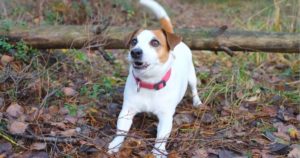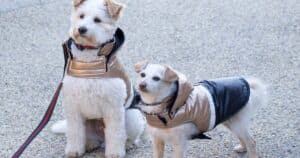
This week’s breed in focus is the Australian Bulldog. While their English cousins originated as far back as the 13th century, the Australian Bulldog is a fairly new breed, first developed in Queensland in the 1990’s in an attempt to improve the breeds tolerance of the harsh Australian environment.
The Australian Bulldog is an intelligent breed and, as they can be a bit dominant with other dogs, early socialisation with other dogs, pets and children is a must.
While selective breeding has done a lot of damage to the Bulldog’s physical features and health, the aggression the Bulldog was first bred with for its early bull baiting role, is not reflected in today’s breed.
The Aussie’s love to be part of the family, are generally affectionate, good-natured and patient with children, so can make for a great companion and family pet.
Intelligent and loyal the Australian Bulldog is relatively easy to train. Obedience training is a must as they do well with consistent training and good leadership from their owners. Like all dogs, they need a firm, but calm, confident and consistent pack leader and daily mental and physical exercise to avoid any behavior issues.
Aussies have a broad chest with stout, compact bodies that are very strong and muscly.
While the Aussie’s are a slight improvement on the English Bulldog in terms of their physical features, sadly they are still severely affected by issues seen in many short-nosed breeds. The most concerning welfare issue of the Aussie’s face is Brachycephalic Obstructive Airway Syndrome (or BOAS).
Symptoms of BOAS are often considered ‘normal’ in these little guys, but are far from that and include: snoring, regurgitation, exercise noise and intolerance, interrupted sleep and sleeping with their neck or head in certain positions.
The Aussie’s are generally affectionate, good-natured and patient with children so can make for a great companion and family pet.
But keep in mind, that they do tend to bulldoze their way around the house and life in general so may not be the ideal choice for families with very young children.
The Australian Bulldog is an active breed, so do well with an average sized backyard, daily walks and other outdoor activities to help keep their weight down. They don’t need excessive exercise and care should be taken not to walk them in the heat due to their breathing problems and susceptibility to heat stroke.
The Australian Bulldog has an average lifespan of 10 – 12 years.
All Aussie Bull dogs should be assessed prior to 12 months of age for signs of BOAS – specialist surgeons agree that most will benefit greatly from surgery on their nostrils and soft palate at a young age. Other issue include hip dysplasia, vertebral and ophthalmic disease including cherry eye and entropion.
If you still think that an Aussie Bull Dog is for you, as a general rule look for longer noses and necks, wider nostrils and narrower chests. See if the parents and pups have been back scored and ask for a copy to show your veterinarian.
Unfortunately the very characteristics that win prizes in the show ring are the ones that lead to health issues so selecting a breeder with a focus on health as opposed to show prizes is paramount.
That’s why it is important to always do your research about any breed you are considering and get pet insurance too that will cover you for the surgery recommended by specialists for this breed!
About the Author: Lara Shannon is a NDTF certified dog behaviourist and trainer, Executive Producer and Host of Pooches at Play on Channel 10 and editor of Poochesatplay.com. Lara also runs her own dog training and boarding business in Melbourne’s Bayside area and is the Author of Eat, Play, Love Your Dog.

The benefit of interactive toys for dogs


Tips for preparing a raw food diet for your pet


Winter safety for dogs – Top Tips


Get your paws on Lara Shannon’s best selling books ‘Eat, Play, Love (your dog) and World of Dogs.
Available in Australia, USA, UK and Canada.